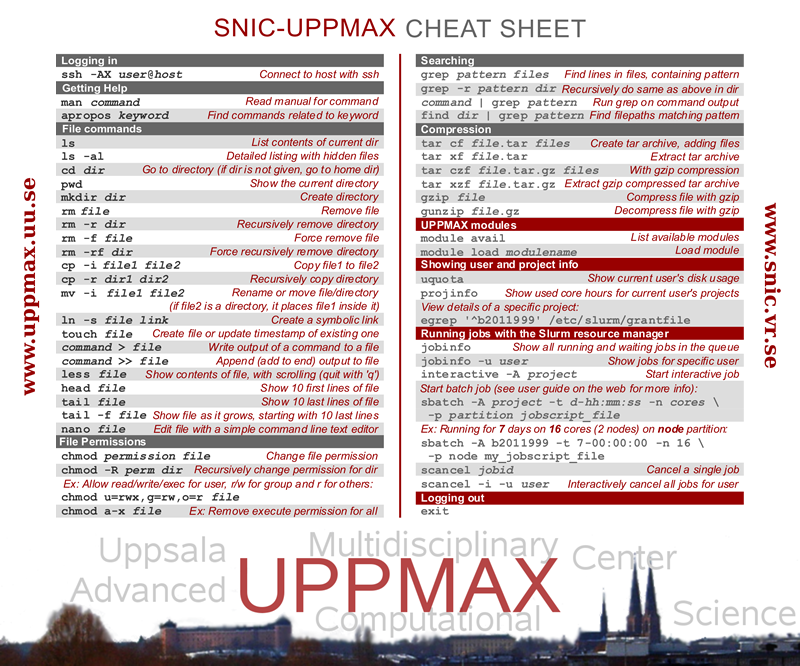

- #Mac os x terminal commands cheat sheet how to
- #Mac os x terminal commands cheat sheet pdf
- #Mac os x terminal commands cheat sheet download
- #Mac os x terminal commands cheat sheet free
Version detection – Interrogating network services on remote devices to determine the application name and version number. OS detection – Determining the operating system and hardware characteristics of network devices. Port scanning – Enumerating the open ports on target hosts. For example, listing the hosts that respond to TCP and/or ICMP requests or have a particular port open. Host discovery – Identifying hosts on a network. Nmap can provide further information on targets, including reverse DNS names, device types, and MAC addresses. Nmap offers some features for probing computer networks, including host discovery and service and operating system detection.
#Mac os x terminal commands cheat sheet free
Option 2: Go to System Preferences and Manually Add the PATH.Nmap is a free open source tool, employed to discover hosts and services on a computer network by sending packets and analyzing the retrieved responses.Working with the Terminal / Command Prompt


#Mac os x terminal commands cheat sheet how to
Today in lecture, we will learn how to work with the Terminal (Mac) or Command Prompt (Windows) in order to (a) run python files and (b) install third-party python modules/packages using PIP. Today's Activitiesįor today, please do the following: 1. Latest shortcuts, quick reference, examples for tmux terminal multiplexer which runs on Linux, OS X, OpenBSD, FreeBSD, NetBSD, etc.
#Mac os x terminal commands cheat sheet download
Download the Exercise Filesįor your convenience, we have made you a little cheatsheet to help you get familiar with the command line. Other optional commands you may find useful… Note: you will not be tested on this or anything, but navigating the command line can be useful. If you have a Windows Machine, there are (at least) two ways to ensure that python3 and PIP work when you run them from the command prompt. you shouldn’t have to do Option 2 unless Option 1 doesn’t work).

#Mac os x terminal commands cheat sheet pdf
In our opinion, the easiest way to get python to work on your command prompt is to run the Python3 installer again and make sure that the checkbox at the very bottom that says Add Python 3.x to PATH is checked: But still, If you are a newbie and want to learn the Linux Terminal like a pro, you must collect these PDF files of the Linux commands cheat sheet. To go this route, you will complete three steps: Step 1 Option 2: Go to System Preferences and Manually Add the PATH #Terminal mac cheat sheet pdf# Search for Edit the System Environment Variables (see below): To execute Terminal commands Mac users need first of all to invoke Terminal in Commander One by pressing simultaneously the combination CTRL + O, and after that follow the above Mac Terminal commands cheat sheet. Start from the desktop screen of your computer or a Finder window. You will then click the Environment Variables button in the Control Panel:įinally, you will add the \Scripts folder in their Python installation to their path (see 3rd screenshot). You will note Finder in the menu bar if you are in the right location. Now, click on the Go button on the menu bar and click on Utilities to open Finder to the right location. Clicking on this opens the Utilities folder. This looks different on everyone’s machine, so you will have to make sure that this PATH corresponds to your Python3 installation. The Linux terminal cheat sheet to rule them all. This screenshot below is pertains to Cooper’s path (one of the course TAs), but yours will look different.


 0 kommentar(er)
0 kommentar(er)
